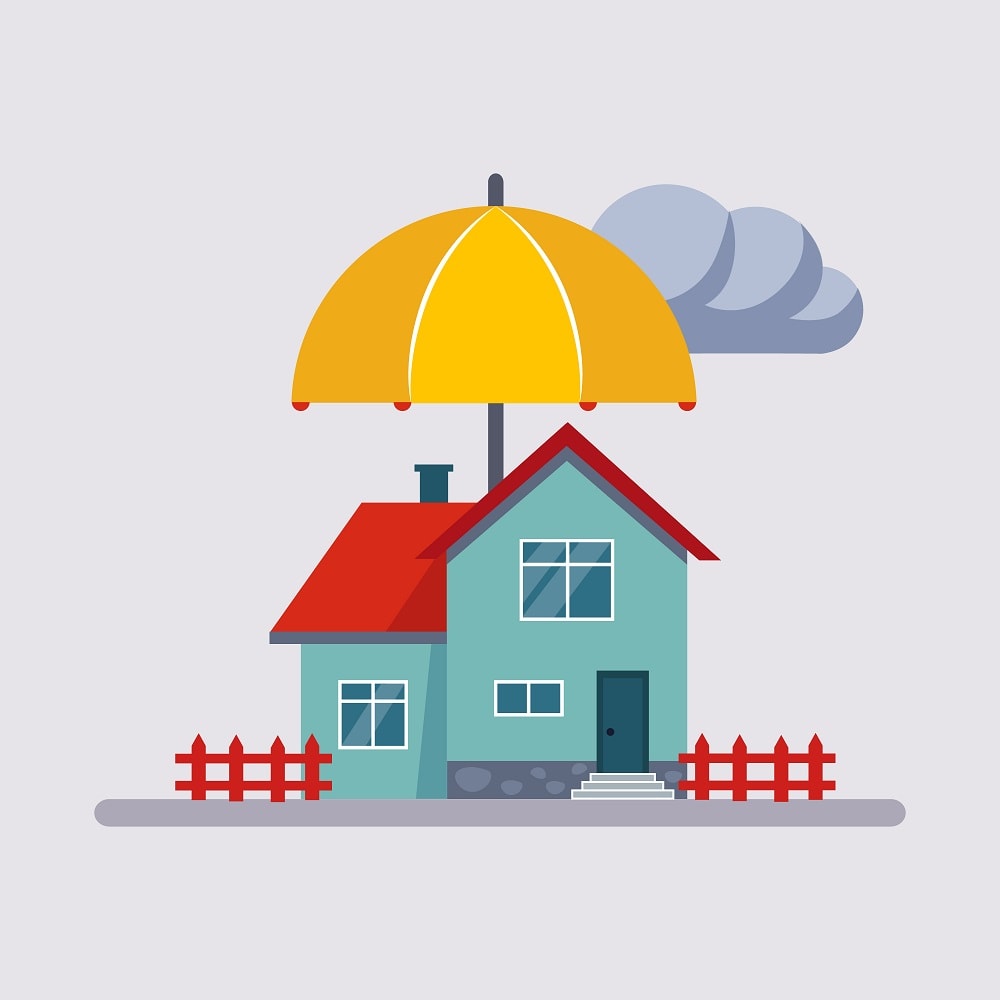There are very few certainties in life, but this one continues to be true: accidents happen. That’s why, whether you just purchased a new home or you’ve lived in your home for years, it’s absolutely essential that you invest in homeowners insurance. Without it, a fire, windstorm or burglary can put you in dire financial straits.
Let’s take a look at how homeowner’s insurance works, what homeowners insurance covers and what homeowners insurance doesn’t cover.
What is Homeowners Insurance?
Homeowners insurance is a policy that protects your most valuable property asset – your house. In the event of an emergency, you can use your coverage to file claims for structural damage, injury, liability costs, personal property loss and costs incurred if you’re not able to live in your home for a period of time.
Having homeowners insurance provides peace of mind that you will be able to recover from any catastrophes that impact your home or family.
If you’re buying a home with a loan, the lender will require a homeowners insurance policy. This will be another closing cost that you’re responsible for.
What Does Homeowner’s Insurance Cost?
Costs vary significantly from state to state and from policy to policy because of differences in odds of a natural disaster striking and differences in policy coverage. ValuePengiun gathered costs for every state in the US. The US Average is $952 dollars a year. Here are the top five most expensive and least expensive states for homeowners insurance:
How Much Coverage Do You Need?
Simply put, the better and more comprehensive your coverage, the less you’ll pay out of pocket if damage occurs. Often, your real estate lender will give you a baseline amount of insurance you are required to take out to qualify for your home loan, but that doesn’t mean you can’t take out more than that.
You want to make sure you take out a policy with enough money to cover costs associated with your home’s structure, your personal possessions, the cost of additional living expenses you’d incur if your home were damaged and your liability to others. Let’s take a closer look at each of those four categories.
Structure
When you consider the amount of structure coverage you need, you have to figure out what it would cost to rebuild your home on your existing plot of land at current construction costs.
This is different than the cost you paid for your home, though it’s not uncommon for banks to require you to buy enough insurance to cover the amount of your mortgage at a bare minimum. For a rough estimate of rebuilding costs, you can multiply your home’s square footage by local building costs per square foot.
To get a more specific number, ask your insurance agent or local builder’s association to help you calculate these costs.
Personal Possessions
Most policies cover your personal possessions for approximately 50-70% of the amount of insurance you have on the structure. In order to figure out if you need more coverage than that, you need to inventory your home and make a detailed list of all your possessions and what they’re worth. You also need to figure out what it would cost to replace those personal possessions.
There are often limits on high-ticket items like jewelry and computers, so be sure to read all the fine print in your policy carefully to make sure you have all the coverage you need. This is especially important if you have a lot of expensive specialty items, like electronics or jewelry. If this is the case, you can opt-in for additional coverage specifically for those items.
Once you have a pretty good idea of the amount of coverage you need for all your stuff, you have to decide whether you want your policy to provide replacement cost or actual cash value of your items. Replacement cost pays you the exact amount of money it costs to replace the item you insured, up the limit of your policy. Actual cash value means your policy pays out money to replace items less a deduction for depreciation.
Because you get more money from the insurance company if you opt for replacement cost coverage, the policy generally costs around 10% more.
Additional Living Expenses After a Disaster
If you need to vacate your home after a flood or fire, you need to make sure your insurance policy offers generous enough coverage to allow you to live outside your home for an extended period of time. Your policy needs to provide enough cash to not only cover a hotel, but also food and any other bills or living expenses you need to take care of while your home is being repaired.
This portion of the policy also allows investors to collect rent you would normally be receiving from tenants. Use your regular monthly bills as a starting point and add in costs for a long-term hotel stay and food budget to come up with a ballpark amount of money you’d need per month and see how long your policy limits would last.
If you decide you want more than just their baseline coverage, you can usually increase it for an additional cost.
Liability Protection
This portion of your coverage is typically broken into two parts; personal liability and medical payments. Personal liability covers court costs, damages and legal defense for any lawsuits that are brought against you because of bodily injury or property damage. These can either occur on your property or can occur away from your property but were caused by you or a family member who is covered by your policy.
Medical payments covers exactly what you would expect it to – medical expenses incurred by anyone who is accidentally injured on your property, usually regardless of fault.
In most cases, your policy will provide a set dollar amount of limited liability protection ‘per occurrence’, which is to say, per accident. The types of incidents and amount of coverage offered varies by policy, so make sure you read all the details and ask questions so you fully understand what and who is covered, and what and who is not.
Additional Considerations
Inflation can cause building costs and item replacement costs to go up. That’s why insurance companies allow you to add an “inflation guard” to your policy. This option automatically adjusts your payout limit to reflect current construction costs every time you renew your policy.
There are also specific considerations homeowner’s with older properties need to keep in mind. For example, your policy may not allow you to buy a replacement policy because it can be difficult to mimic older home’s unique characteristics. Your policy may require that you replace older fixtures with modern materials in the event that damage occurs.
Tips to Save Money on Homeowners Insurance
Ask your agent for discounts. Sometimes discounts are available for those who use the same company to insure their car and home, or who have items such as security systems, deadbolt locks, or newly replaced roofs.
You also may receive discounts if you’ve gone a certain period of time without filing a claim.
Don’t Miss Out on Critical Coverage
Standard plans usually safe-guard against wind, fire and theft but many don’t cover flooding, hail damage, earthquake damage and so on. Spend a good amount of time working with your agent to figure out where it makes sense to beef up your policy and where you can scale back a little bit.
For example, if you live in tornado alley, adding windstorm damage coverage may be a really good idea. You should also consider adding additional coverage for personal property, liability and medical payments. Make sure you re-evaluate and update your coverage annually, and if you add a new room or addition to your house, make you get it covered.
Once you’ve found the perfect coverage, you can sleep soundly at night knowing that if something does happen, your property and family are covered and you’re financially prepared to handle it.



